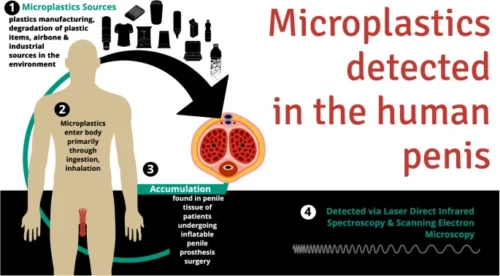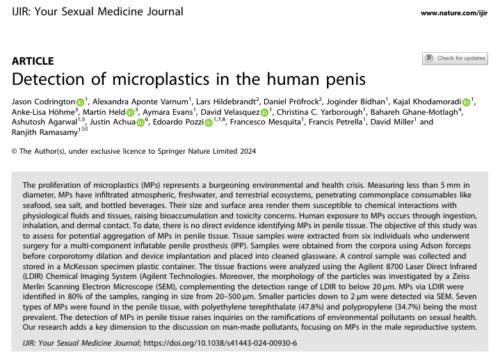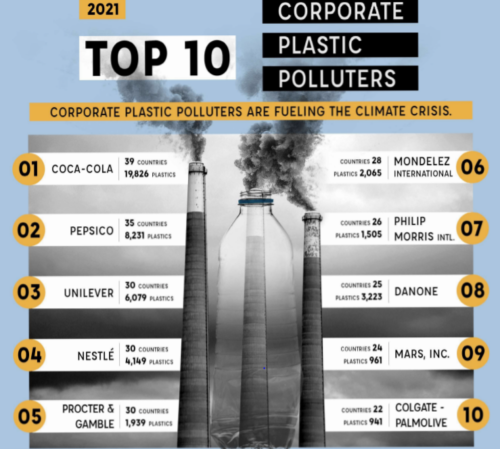Here’s something I haven’t yet written about but I’m seeing so much on the topic that it’s due.
Microplastics are small (5 millimeters and much, much smaller) particles that come off of plastic containers, wrappings, and waste. They are now everywhere and in everything, including oceans, water supplies, food, animals, and us.
Not nearly enough is known about their effects, but early signs are not reassuring.
Some examples:
Bottled water can contain thousands of particles of nanoplastics, research suggests: Microplastics, which research suggests could be harmful to human health, are well-known infiltrators of a wide variety of food and beverages. Now, researchers have found that nanoplastics, the even smaller offspring of microplastics, are present in stratospheric quantities in bottled water, unbeknownst to us until now…. Read more
Plastic chemicals linked to $249 billion in US health care costs in 2018 alone, study finds: By contributing to the development of chronic disease and death, a group of hormone-disruptive plastic chemicals is costing the US health care system billions — over $249 billion in 2018 alone, a new study found.
Should We Care That We’re Drinking Nanoplastics? A new study this week in Proceedings of the National Academy of Science tells us that every bottle of water we’re drinking has hundreds of thousands of nanoplastics….Nanoplastics and microplastics are not innocuous, but their risks are poorly understood. They come with chemicals that can be endocrine disruptors and contribute to obesity.
How Plastic Can Harm Your Health: Plastic is everywhere—even in the foods we eat and the beverages we drink. CR’s [Consumer Reports’] recent tests of nearly 100 foods found two types of chemicals used in plastic, bisphenols and phthalates, in a wide variety of packaged foods.
Everything you need to know about plastic pollution:This year’s World Environment Day – the fiftieth iteration of the annual celebration of the planet – is focusing on the plastic pollution crisis. The reason? Humanity produces more than 430 million tonnes of plastic annually, two-thirds of which are short-lived products that soon become waste, filling the ocean and, often, working their way into the human food chain.
Plastic food packaging contains harmful endocrine disrupting chemicals, study confirms: Many plastic food contact materials – plastics that are used in the processing and packaging of food – contain toxic chemicals that disrupt the endocrine system and metabolism, according to a new study published in Environmental Science & Technology.
Microplastics: In January 2019, ECHA [European Chemicals Agency] proposed a wide-ranging restriction on microplastics in products placed on the EU/EEA market to avoid or reduce their release to the environment. A consultation on the restriction proposal was organised from March to September 2019….The proposal is expected to prevent the release of 500 000 tonnes of microplastics over 20 years.
Comment: We should be looking hard at similar restrictions and at methods for reducing use of plastics and phasing them out. This won’t be easy, as discussed in: Microplastic regulation should be more precise to incentivize both innovation and environmental safety. Is this one more food issue we need to be worried about? I think it is.




